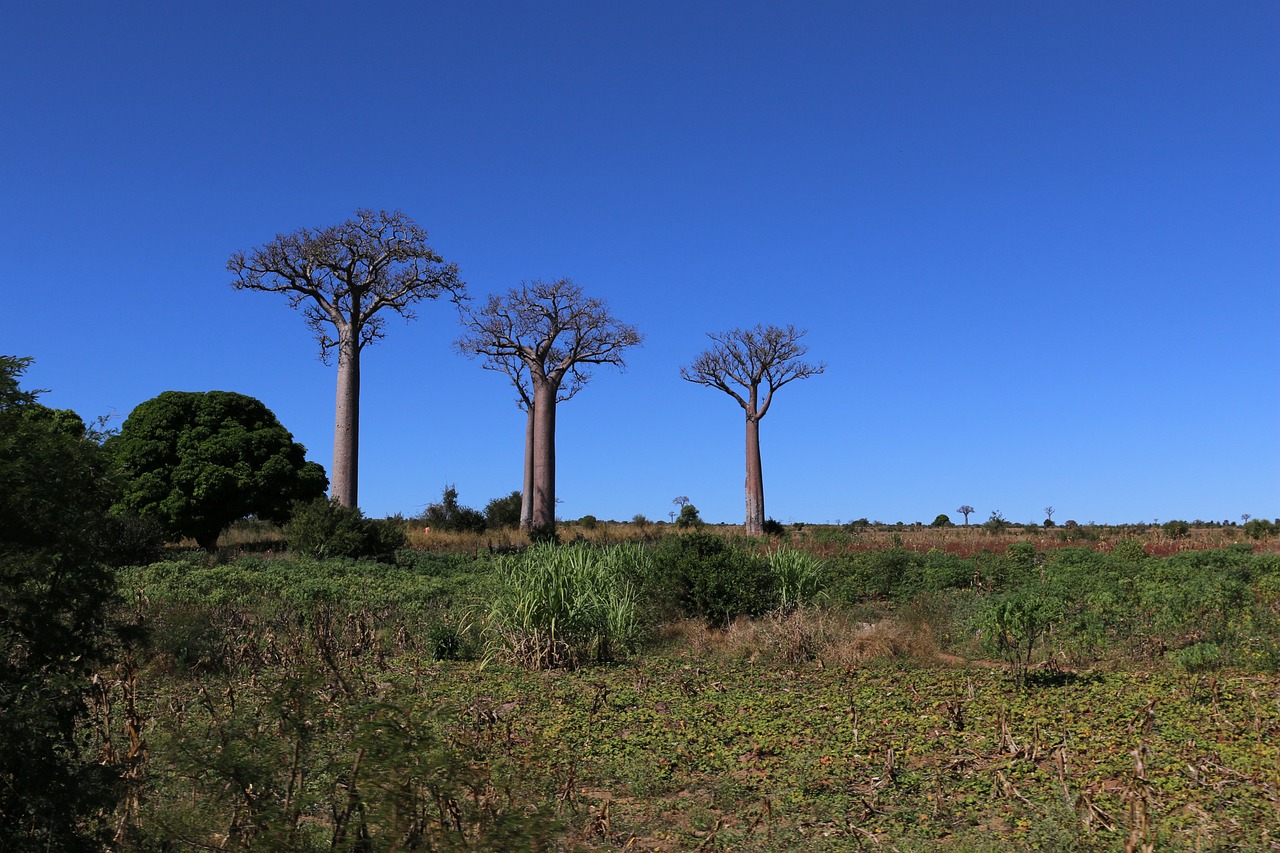
Vocabulary:
- enigmatic /en-ig-MAT-ik/
- dispersal /dih-SPUR-suhl/
- lineage /LIN-ee-ij/
- arid /AR-id/
- hollow /HOL-oh/
[adjective] – mysterious and impossible to understand completely
The enigmatic smile of the Mona Lisa has puzzled art historians for centuries.
[noun] – the act of distributing or spreading something over a wide area
The dispersal of seeds by the wind ensures that the plant species can thrive in new locations.
[noun] – the direct descent or ancestry of a group of organisms, including their evolutionary history and genetic relationships
Researchers studied the lineage of the endangered species to better understand its evolutionary adaptations.
[adjective] – very dry and without enough rain for plants
The desert’s arid climate makes it difficult for plants to thrive without sufficient rainfall.
[adjective] – having a hole or empty space inside
The old tree was hollow, allowing small animals to use it as a shelter.
Article reading:
The baobab’s significance extends beyond its botanical interest; it plays a crucial ecological and cultural role in its habitats. In the arid savannahs where it thrives, the baobab is vital for the survival of various wildlife, providing shelter, nesting sites, and nourishment through its fruit, leaves, and flowers. These trees are not only a source of essential nutrients and traditional medicines for local communities but also serve as a natural reservoir, storing large quantities of water in their hollow trunks, which proves invaluable during dry seasons. Moreover, the baobab’s longevity and extensive root systems greatly aid in soil stability and nutrient recycling, highlighting its ecological significance. The study further underscores the baobab’s resilience and its integral role in supporting diverse ecosystems, ranging from nocturnal pollinators to primates, cementing its status as a key species in these habitats.
Discussion Questions:
- Have you ever seen a baobab tree in person or in media? If so, what was your impression of its unique shape and size? If not, would you be interested in seeing one, and why?
- Have you studied or come across plants in your region that have special adaptations to survive in challenging environments? If so, can you describe one and its adaptations? If not, why do you think such plants are important to learn about?
- Do you agree with the idea that plants like the baobab, which contribute significantly to ecological stability and biodiversity, should be prioritized in conservation efforts?
- Given the baobab’s importance to both the environment and local communities, what strategies would you propose to protect these trees from threats such as climate change and deforestation?
- Reflecting on the baobab’s role in nutrient recycling and soil stabilization, how do you think the removal of such key species would affect the overall health of the ecosystems they inhabit?
Summarization
Describe:
- ecosystem
- biodiversity
- migration
- nocturnal
- geological